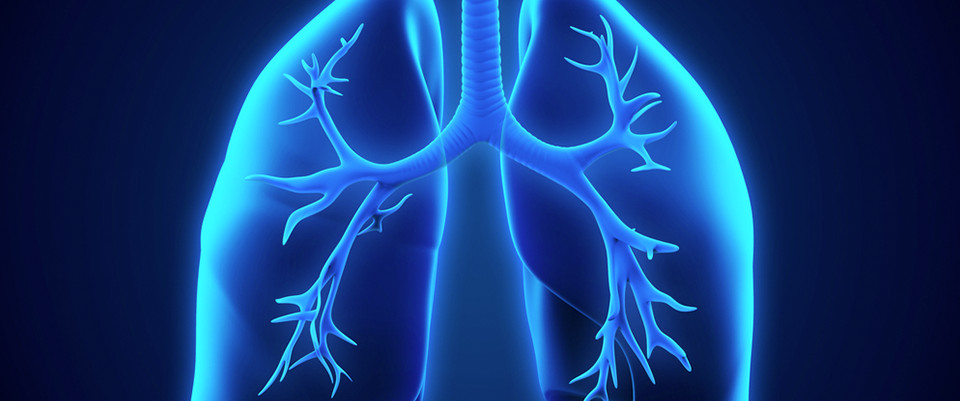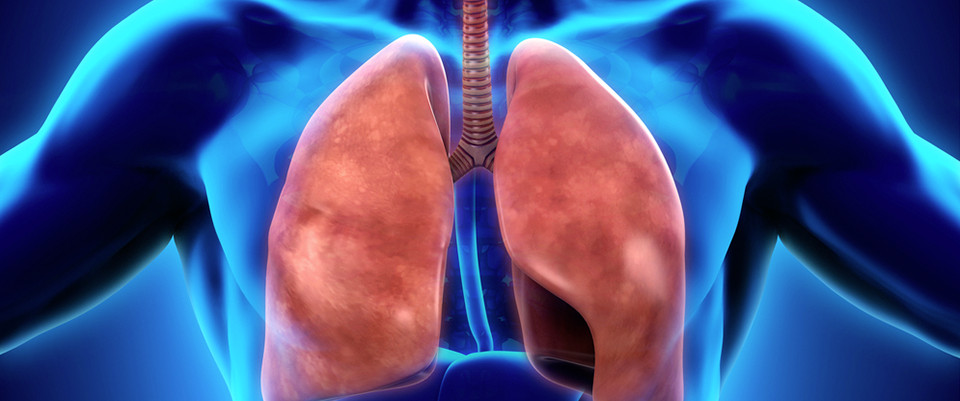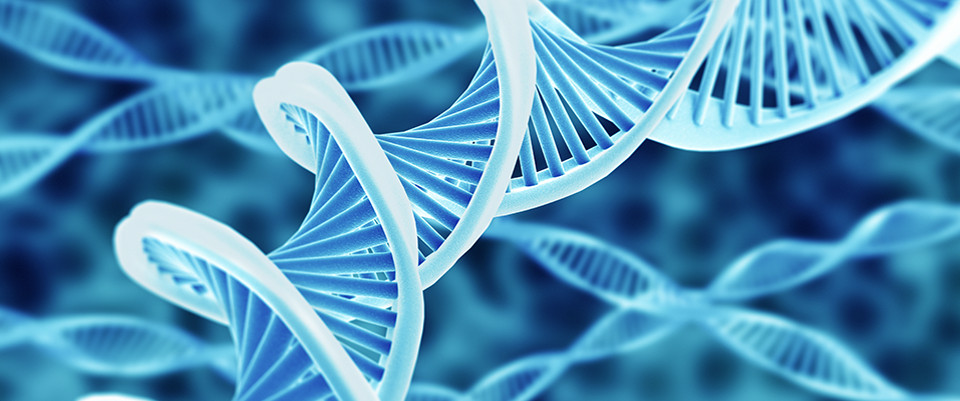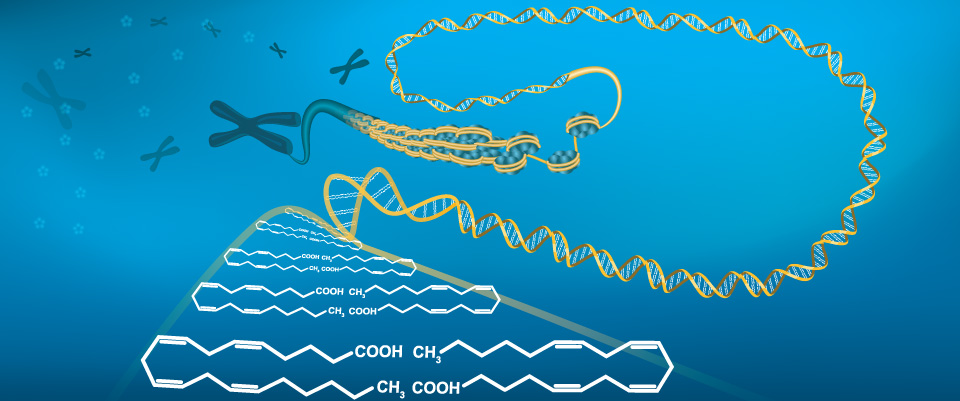PubMed
Maternal intravenous administration of azithromycin results in significant fetal uptake in a sheep model of second trimester pregnancy.
Related Articles
Maternal intravenous administration of azithromycin results in significant fetal uptake in a sheep model of second trimester pregnancy.
Antimicrob Agents Chemother. 2014 Nov;58(11):6581-91
Authors: Kemp MW, Miura Y, Payne MS, Jobe AH, Kallapur SG, Saito M, Stock SJ, Spiller OB, Ireland DJ, Yaegashi N, Clarke M, Hahne D, Rodger J, Keelan JA, Newnham JP
Abstract
Treatment of intrauterine infection is likely key to preventing a significant proportion of preterm deliveries before 32 weeks of gestation. Azithromycin (AZ) may be an effective antimicrobial in pregnancy; however, few gestation age-approriate data are available to inform the design of AZ-based treatment regimens in early pregnancy. We aimed to determine whether a single intra-amniotic AZ dose or repeated maternal intravenous (i.v.) AZ doses would safely yield therapeutic levels of AZ in an 80-day-gestation (term is 150 days) ovine fetus. Fifty sheep carrying single pregnancies at 80 days gestation were randomized to receive either: (i) a single intra-amniotic AZ administration or (ii) maternal intravenous AZ administration every 12 h. Amniotic fluid, maternal plasma, and fetal AZ concentrations were determined over a 5-day treatment regimen. Markers of liver injury and amniotic fluid inflammation were measured to assess fetal injury in response to drug exposure. A single intra-amniotic administration yielded significant AZ accumulation in the amniotic fluid and fetal lung. In contrast, repeated maternal intravenous administrations achieved high levels of AZ accumulation in the fetal lung and liver and a statistically significant increase in the fetal plasma drug concentration at 120 h. There was no evidence of fetal injury in response to drug exposure. These data suggest that (i) repeated maternal i.v. AZ dosing yields substantial fetal tissue uptake, although fetal plasma drug levels remain low; (ii) transfer of AZ from the amniotic fluid is less than transplacental transfer; and (iii) exposure to high concentrations of AZ did not elicit overt changes in fetal white blood cell counts, amniotic fluid monocyte chemoattractant protein 1 concentrations, or hepatotoxicity, all consistent with an absence of fetal injury.
PMID: 25155606 [PubMed - indexed for MEDLINE]
Fingerprinting and simultaneous determination of alkaloids and limonins in Phellodendri amurensis cortex from different locations by high-performance liquid chromatography with diode array detection.
Related Articles
Fingerprinting and simultaneous determination of alkaloids and limonins in Phellodendri amurensis cortex from different locations by high-performance liquid chromatography with diode array detection.
J Chromatogr Sci. 2015 Jan;53(1):161-6
Authors: Wang L, Yan G, Zhang A, Shi H, Sun H, Wang X
Abstract
A sensitive high-performance liquid chromatography method coupled with diode array detection (HPLC-DAD) was developed for the quality control of Phellodendri amurensis cortex (PAC), the quality control included the simultaneous determination of seven major constituents, namely phellodendrine, magnoflorine, jatrorrhizine, palmatine, berberine, obaculactone and obacunone. The chromatographic separation was accomplished on a Diamonsil-C18 column (4.6 mm × 200 mm, 5 μm) with acetonitrile and 0.1% phosphoric acid (0.02 mol sodium dihydrogen phosphate per liter) by linear gradient elution. The established method was successfully validated by acceptable linearity, limits of detection and quantitation, precision, repeatability, stability and accuracy. The HPLC-DAD fingerprint chromatograph under 220 nm consisting of 21 peaks was constructed for the evaluation of the 11 batches of PAC. The HPLC fingerprints were analyzed by similarity analysis, hierarchical clustering analysis and principal component analysis. The results indicated that the combination of multicomponent determination method and chromatographic fingerprint analysis could be employed for the quantitative analysis and identification of PAC, as well as pharmaceutical products containing this herbal material.
PMID: 24872523 [PubMed - indexed for MEDLINE]
Alterations in Spinal Cord Metabolism during Treatment of Neuropathic Pain.
Related Articles
Alterations in Spinal Cord Metabolism during Treatment of Neuropathic Pain.
J Neuroimmune Pharmacol. 2015 Aug 2;
Authors: Johnson CH, Patti GJ, Courade JP, Shriver LP, Hoang LT, Manchester M, Siuzdak G
Abstract
Therapeutic options for neuropathic pain have improved over the last 20 years yet still only provide partial relief with numerous side effects. Recently, metabolomics revealed that the concentration of the endogenous metabolite N,N-dimethylsphingosine (DMS) is increased in the spinal cord in a model of neuropathic pain. Additionally, it was shown that introduction of DMS to the central nervous system (CNS) resulted in mechanical allodynia. Here, we have examined two compounds; pregabalin (Lyrica®), a drug used to treat neuropathic pain, and N-oleoylethanolamine (NOE), an endogenous endocannabinoid-like compound that is known to affect multiple lipid pathways. We found that the concentration of DMS in the spinal cord was not significantly altered upon pregabalin treatment of rats suffering from neuropathic pain. We further explored whether modulating lipid metabolism may impact neuropathic pain by testing NOE as a potential novel therapeutic.
PMID: 26232265 [PubMed - as supplied by publisher]
An Extensive Library of Surrogate Peptides for all Human Proteins.
Related Articles
An Extensive Library of Surrogate Peptides for all Human Proteins.
J Proteomics. 2015 Jul 28;
Authors: Mohammed Y, Borchers CH
Abstract
Selecting the most appropriate surrogate peptides to represent a target protein is a major component of experimental design in Multiple Reaction Monitoring (MRM). Our software PeptidePicker with its v-score remains distinctive in its approach of integrating information about the proteins, their tryptic peptides, and the suitability of these peptides for MRM that is available online in UniProtKB, NCBI's dbSNP, ExPASy, PeptideAtlas, PRIDE, and GPMDB. The scoring algorithm reflects our "best knowledge" for selecting candidate peptides for MRM, based on the uniqueness of the peptide in the targeted proteome, its physiochemical properties, and whether it has previously been observed. Here we present an updated approach where we have already compiled a list of all possible surrogate peptides of the human proteome. Using our stringent selection criteria, the list includes 165k suitable MRM peptides covering 17k proteins of the human reviewed proteins in UniProtKB. Compared to average of 2-4 minutes per protein for retrieving and integrating the information, the precompiled list includes all peptides available instantly. This allows a more cohesive and faster design of a multiplexed MRM experiment and provides insights into evidence for a protein's existence. We will keep this list up-to-date as proteomics data repositories continue to grow.
BIOLOGICAL SIGNIFICANCE: A list of all possible surrogate peptides of the human proteome has been compiled using our tool PeptidePicker. This list enables a cohesive and faster design of multiplexed MRM experiments. We used stringent selection criteria on the human reviewed proteins in UniProtKB to create the list which includes 165k MRM-suitable peptides covering 17k proteins. Compared to average of a few minutes per protein for retrieving and integrating the information from online repositories using our automatic workflow, the pre-compiled list has the information for all of the peptides available instantly. The list also provides interesting insights into the proteins' evidence of existence. 3,389 proteins reported in UniProtKB as having only a "lower level" of existence evidence actually have mass spectrometric evidence of existence in online data repositories.
PMID: 26232110 [PubMed - as supplied by publisher]
Review of validation and reporting of non-targeted fingerprinting approaches for food authentication.
Related Articles
Review of validation and reporting of non-targeted fingerprinting approaches for food authentication.
Anal Chim Acta. 2015 Jul 23;885:17-32
Authors: Riedl J, Esslinger S, Fauhl-Hassek C
Abstract
Food fingerprinting approaches are expected to become a very potent tool in authentication processes aiming at a comprehensive characterization of complex food matrices. By non-targeted spectrometric or spectroscopic chemical analysis with a subsequent (multivariate) statistical evaluation of acquired data, food matrices can be investigated in terms of their geographical origin, species variety or possible adulterations. Although many successful research projects have already demonstrated the feasibility of non-targeted fingerprinting approaches, their uptake and implementation into routine analysis and food surveillance is still limited. In many proof-of-principle studies, the prediction ability of only one data set was explored, measured within a limited period of time using one instrument within one laboratory. Thorough validation strategies that guarantee reliability of the respective data basis and that allow conclusion on the applicability of the respective approaches for its fit-for-purpose have not yet been proposed. Within this review, critical steps of the fingerprinting workflow were explored to develop a generic scheme for multivariate model validation. As a result, a proposed scheme for "good practice" shall guide users through validation and reporting of non-targeted fingerprinting results. Furthermore, food fingerprinting studies were selected by a systematic search approach and reviewed with regard to (a) transparency of data processing and (b) validity of study results. Subsequently, the studies were inspected for measures of statistical model validation, analytical method validation and quality assurance measures. In this context, issues and recommendations were found that might be considered as an actual starting point for developing validation standards of non-targeted metabolomics approaches for food authentication in the future. Hence, this review intends to contribute to the harmonization and standardization of food fingerprinting, both required as a prior condition for the authentication of food in routine analysis and official control.
PMID: 26231890 [PubMed - as supplied by publisher]
Metabolomic Applications to the Characterization of the Mode-of-Action of CDK Inhibitors.
Related Articles
Metabolomic Applications to the Characterization of the Mode-of-Action of CDK Inhibitors.
Methods Mol Biol. 2016;1336:211-223
Authors: Palomino-Schätzlein M, Pineda-Lucena A
Abstract
Cyclin-dependent kinases (CDKs) regulate cell cycle progression, and some of them are also involved in the control of cellular transcription. Dysregulation of these critical cellular processes, due to the aberrant expression of some of these proteins, is common in many neoplastic malignancies. Consequently, the development of chemical compounds capable of inhibiting the biological activity of CDKs represents an attractive strategy in the anticancer area. CDK inhibition can trigger apoptosis and could be particularly useful in hematological malignancies, which are more sensitive to inhibition of cell cycle and apoptosis induction. Over the last few years, a number of pharmacological inhibitors of CDKs (CDKIs) belonging to different chemical families have been developed, and some of them have been tested in clinical trials. Given the complexity of the role of CDKs in cell functioning, it would be desirable to develop new tools that could facilitate a better understanding of the new insights into CDK functions and the mode-of-actions of CDKIs. In this context, this chapter describes an experimental approach to evaluate the metabolic consequences of CDKIs at the cellular level based on metabolomics by NMR. More specifically, a description of a strategy to characterize the biochemical effects of CDKIs acting on mammalian cells is provided, including protocols for the extraction of hydrophilic and lipophilic metabolites, the acquisition of 1D and 2D metabolomic Nuclear Magnetic Resonance (NMR) experiments, the identification and quantification of metabolites, and the annotation of the results in the context of biochemical pathways.
PMID: 26231718 [PubMed - as supplied by publisher]
The Role of the Epigenome in Translating Neighborhood Disadvantage Into Health Disparities.
Related Articles
The Role of the Epigenome in Translating Neighborhood Disadvantage Into Health Disparities.
Curr Environ Health Rep. 2015 Jun;2(2):163-170
Authors: Olden K, Olden HA, Lin YS
Abstract
The possible causal role of the environment in health disparities is not well understood, even though it has been a national priority for many years. Progress to investigate the relationship between genetics, environmental exposures, and health outcomes has been hampered by the lack of analytical tools to quantify the combined or cumulative effect of multiple chemical and non-chemical stressors on gene expression. The studies cited here provide a strong rationale for using epigenomic analysis to assess cumulative risk from multiple environmental exposures over the life course. The environment-specific "imprints" on the genome, coupled with transcriptomics and metabolomics, can be used to advance our understanding of the relationship between neighborhood disadvantage and health disparities.
PMID: 26231365 [PubMed - as supplied by publisher]
metabolomics; +20 new citations
20 new pubmed citations were retrieved for your search.
Click on the search hyperlink below to display the complete search results:
metabolomics
These pubmed results were generated on 2015/08/01PubMed comprises more than 24 million citations for biomedical literature from MEDLINE, life science journals, and online books.
Citations may include links to full-text content from PubMed Central and publisher web sites.
metabolomics; +16 new citations
16 new pubmed citations were retrieved for your search.
Click on the search hyperlink below to display the complete search results:
metabolomics
These pubmed results were generated on 2015/07/30PubMed comprises more than 24 million citations for biomedical literature from MEDLINE, life science journals, and online books.
Citations may include links to full-text content from PubMed Central and publisher web sites.
Metabolic profiling of breast cancer: Differences in central metabolism between subtypes of breast cancer cell lines.
Related Articles
Metabolic profiling of breast cancer: Differences in central metabolism between subtypes of breast cancer cell lines.
J Chromatogr B Analyt Technol Biomed Life Sci. 2015 Jul 14;1000:95-104
Authors: Willmann L, Schlimpert M, Halbach S, Erbes T, Stickeler E, Kammerer B
Abstract
Although the concept of aerobic glycolysis in cancer was already reported in the 1930s by Otto Warburg, the understanding of metabolic pathways remains challenging especially due to the heterogeneity of cancer. In consideration of four different time points (1, 2, 4, and 7 days of incubation), GC-MS profiling of metabolites was performed on cell extracts and supernatants of breast cancer cell lines (MDA-MB-231, -453, BT-474) with different sub classification and the breast epithelial cell line MCF-10A. To the exclusion of trypsinization, direct methanolic extraction, cell scraping and cell disruption was executed to obtain central metabolites. Major differences in biochemical pathways have been observed in the breast cancer cell lines compared to the breast epithelial cell line, as well as between the breast cancer cell lines themselves. Characteristics of breast cancer subtypes could be correlated to their individual metabolic profiles. PLS-DA revealed the discrimination of breast cancer cell lines from MCF-10A based on elevated amino acid levels. The observed metabolic signatures have great potential as biomarker for breast cancer as well as an improved understanding of subtype specific phenomenons of breast cancer.
PMID: 26218769 [PubMed - as supplied by publisher]
Lipid and protein maps defining arterial layers in atherosclerotic aorta.
Related Articles
Lipid and protein maps defining arterial layers in atherosclerotic aorta.
Data Brief. 2015 Sep;4:328-31
Authors: Martin-Lorenzo M, Balluff B, Maroto AS, Carreira RJ, van Zeijl RJ, Gonzalez-Calero L, de la Cuesta F, Barderas MG, Lopez-Almodovar LF, Padial LR, McDonnell LA, Vivanco F, Alvarez-Llamas G
Abstract
Subclinical atherosclerosis cannot be predicted and novel therapeutic targets are needed. The molecular anatomy of healthy and atherosclerotic tissue is pursued to identify ongoing molecular changes in atherosclerosis development. Mass Spectrometry Imaging (MSI) accounts with the unique advantage of analyzing proteins and metabolites (lipids) while preserving their original localization; thus two dimensional maps can be obtained. Main molecular alterations were investigated in a rabbit model in response to early development of atherosclerosis. Aortic arterial layers (intima and media) and calcified regions were investigated in detail by MALDI-MSI and proteins and lipids specifically defining those areas of interest were identified. These data further complement main findings previously published in J Proteomics (M. Martin-Lorenzo et al., J. Proteomics. (In press); M. Martin-Lorenzo et al., J. Proteomics 108 (2014) 465-468.) [1,2].
PMID: 26217810 [PubMed]
Data from identification of diagnostic biomarkers and metabolic pathway shifts of heat-stressed lactating dairy cows.
Related Articles
Data from identification of diagnostic biomarkers and metabolic pathway shifts of heat-stressed lactating dairy cows.
Data Brief. 2015 Sep;4:90-5
Authors: Tian H, Wang W, Zheng N, Cheng J, Li S, Zhang Y, Wang J
Abstract
Controlling heat stress (HS) is a global challenge for the dairy industry. In this work, an integrated metabolomics and lipidomics approach using (1)H nuclear magnetic resonance (NMR) and ultra-fast LC-MS in combination with multivariate analyses was employed to investigate the discrimination of plasma metabolic profiles between HS-free and HS lactating dairy cows. Here we provide the information about the acquiring and processing of raw data obtained by (1)H NMR and LC-MS techniques. The data of present study are related to the research article "Identification of diagnostic biomarkers and metabolic pathway shifts of heat-stressed lactating dairy cows" in the Journal of Proteomics (Tian et al., J. Proteomics, (2015), doi:10.1016/j.jprot.2015.04.014).
PMID: 26217769 [PubMed]
Data in support of enhancing metabolomics research through data mining.
Related Articles
Data in support of enhancing metabolomics research through data mining.
Data Brief. 2015 Jun;3:155-64
Authors: Martínez-Arranz I, Mayo R, Pérez-Cormenzana M, Mincholé I, Salazar L, Alonso C, Mato JM
Abstract
Metabolomics research has evolved considerably, particularly during the last decade. Over the course of this evolution, the interest in this 'omic' discipline is now more evident than ever. However, the future of metabolomics will depend on its capability to find biomarkers. For that reason, data mining constitutes a challenging task in metabolomics workflow. This work has been designed in support of the research article entitled "Enhancing metabolomics research through data mining", which proposed a methodological data handling guideline. An aging research in healthy population was used as a guiding thread to illustrate this process. Here we provide a further interpretation of the obtained statistical results. We also focused on the importance of graphical visualization tools as a clue to understand the most common univariate and multivariate data analyses applied in metabolomics.
PMID: 26217737 [PubMed]
Spatially resolved in vivo plant metabolomics by laser ablation-based mass spectrometry imaging (MSI) techniques: LDI-MSI and LAESI.
Related Articles
Spatially resolved in vivo plant metabolomics by laser ablation-based mass spectrometry imaging (MSI) techniques: LDI-MSI and LAESI.
Front Plant Sci. 2015;6:471
Authors: Bartels B, Svatoš A
Abstract
This short review aims to summarize the current developments and applications of mass spectrometry-based methods for in situ profiling and imaging of plants with minimal or no sample pre-treatment or manipulation. Infrared-laser ablation electrospray ionization and UV-laser desorption/ionization methods are reviewed. The underlying mechanisms of the ionization techniques-namely, laser ablation of biological samples and electrospray ionization-as well as variations of the LAESI ion source for specific targets of interest are described.
PMID: 26217345 [PubMed]
The quest for tolerant varieties: the importance of integrating "omics" techniques to phenotyping.
Related Articles
The quest for tolerant varieties: the importance of integrating "omics" techniques to phenotyping.
Front Plant Sci. 2015;6:448
Authors: Zivy M, Wienkoop S, Renaut J, Pinheiro C, Goulas E, Carpentier S
Abstract
The primary objective of crop breeding is to improve yield and/or harvest quality while minimizing inputs. Global climate change and the increase in world population are significant challenges for agriculture and call for further improvements to crops and the development of new tools for research. Significant progress has been made in the molecular and genetic analysis of model plants. However, is science generating false expectations? Are 'omic techniques generating valuable information that can be translated into the field? The exploration of crop biodiversity and the correlation of cellular responses to stress tolerance at the plant level is currently a challenge. This viewpoint reviews concisely the problems one encounters when working on a crop and provides an outline of possible workflows when initiating cellular phenotyping via "-omic" techniques (transcriptomics, proteomics, metabolomics).
PMID: 26217344 [PubMed]
Potential of metabolomics to reveal Burkholderia cepacia complex pathogenesis and antibiotic resistance.
Related Articles
Potential of metabolomics to reveal Burkholderia cepacia complex pathogenesis and antibiotic resistance.
Front Microbiol. 2015;6:668
Authors: Shommu NS, Vogel HJ, Storey DG
Abstract
The Burkholderia cepacia complex (Bcc) is a collection of closely related, genetically distinct, ecologically diverse species known to cause life-threatening infections in cystic fibrosis (CF) patients. By virtue of a flexible genomic structure and diverse metabolic activity, Bcc bacteria employ a wide array of virulence factors for pathogenesis in CF patients and have developed resistance to most of the commonly used antibiotics. However, the mechanism of pathogenesis and antibiotic resistance is still not fully understood. This mini review discusses the established and potential virulence determinants of Bcc and some of the contemporary strategies including transcriptomics and proteomics used to identify these traits. We also propose the application of metabolic profiling, a cost-effective modern-day approach to achieve new insights.
PMID: 26217312 [PubMed]
Selenocysteine-independent suppression of UGA codons in the archaeon Methanococcus maripaludis.
Related Articles
Selenocysteine-independent suppression of UGA codons in the archaeon Methanococcus maripaludis.
Biochim Biophys Acta. 2015 Jul 24;
Authors: Seyhan D, Jehmlich N, von Bergen M, Fersch J, Rother M
Abstract
BACKGROUND: Proteins containing selenocysteine (sec) are found in Bacteria, Eukarya, and Archaea. While selenium-dependence of methanogenesis from H2+CO2 in the archaeon Methanococcus maripaludis JJ is compensated by induction of a set of cysteine-containing homologs, growth on formate is abrogated in the absence of sec due to the dependence of formate dehydrogenase (Fdh) on selenium. Despite this dependence, formate-dependent growth occurs after prolonged incubation of M. maripaludis mutants lacking sec.
METHODS: To study this phenomenon, a M. maripaludis strain with only one Fdh isoform and an FdhA selenoprotein C-terminally tagged for affinity enrichment was constructed. Factors required for sec synthesis were deleted in this strain and translation of UGA in fdhA was analyzed physiologically, enzymatically, immunologically, and via mass spectrometry.
RESULTS: M. maripaludis JJ mutants lacking sec synthesis grew at least five times more slowly than the wild type on formate due to a 20-35-fold reduction of Fdh activity. The enzyme in the mutant strains lacked sec but was still produced as a full-length protein. Peptide mass spectrometry revealed that both cysteine (cys) and tryptophan (trp) were inserted at the UGA encoding sec without apparent mutations in tRNA(cys) or tRNA(trp), respectively.
CONCLUSIONS: We demonstrate that M. maripaludis has the inherent capacity to translate UGA with cys and trp; other mechanisms to replace sec with cys in the absence of selenium could thereby be ruled out.
GENERAL SIGNIFICANCE: This study exemplifies how an organism uses the inherent flexibility in its canonical protein synthesis machinery to recover some activity of an essential selenium-dependent enzyme in the absence of sec.
PMID: 26215786 [PubMed - as supplied by publisher]
Hyperpolarized NMR of plant and cancer cell extracts at natural abundance.
Related Articles
Hyperpolarized NMR of plant and cancer cell extracts at natural abundance.
Analyst. 2015 Jul 28;
Authors: Dumez JN, Milani J, Vuichoud B, Bornet A, Lalande-Martin J, Tea I, Yon M, Maucourt M, Deborde C, Moing A, Frydman L, Bodenhausen G, Jannin S, Giraudeau P
Abstract
Natural abundance (13)C NMR spectra of biological extracts are recorded in a single scan provided that the samples are hyperpolarized by dissolution dynamic nuclear polarization combined with cross polarization. Heteronuclear 2D correlation spectra of hyperpolarized breast cancer cell extracts can also be obtained in a single scan. Hyperpolarized NMR of extracts opens many perspectives for metabolomics.
PMID: 26215673 [PubMed - as supplied by publisher]
Signaling network of lipids as a comprehensive scaffold for omics data integration in sputum of COPD patients.
Related Articles
Signaling network of lipids as a comprehensive scaffold for omics data integration in sputum of COPD patients.
Biochim Biophys Acta. 2015 Jul 24;
Authors: Azimzadeh S, Mirzaie M, Jafari M, Mehrani H, Shariati P, Khodabandeh M
Abstract
Chronic obstructive pulmonary disease (COPD) is a heterogeneous and progressive inflammatory condition that has been linked to the dysregulation of many metabolic pathways including lipid biosynthesis. How lipid metabolism could affect disease progression in smokers with COPD remains unclear. We cross-examined the transcriptomics, proteomics, metabolomics, and phenomics data available on the public domain to elucidate the mechanisms by which lipid metabolism is perturbed in COPD. We reconstructed a sputum lipid COPD (SpLiCO) signaling network utilizing active/inactive, and functional/dysfunctional lipid-mediated signaling pathways to explore how lipid-metabolism could promote COPD pathogenesis in smokers. SpLiCO was further utilized to investigate signal amplifiers, distributers, propagators, feed-forward and/or -back loops that link COPD disease severity and hypoxia to disruption in the metabolism of sphingolipids, fatty acids and energy. Also, hypergraph analysis and calculations for dependency of molecules identified several important nodes in the network with modular regulatory and signal distribution activities. Our systems-based analyses indicate that arachidonic acid is a critical and early signal distributer that is upregulated by the sphingolipid signaling pathway in COPD, while hypoxia plays a critical role in the elevated dependency to glucose as a major energy source. Integration of SpLiCo and clinical data shows a strong association between hypoxia and the upregulation of sphingolipids in smokers with emphysema, vascular disease, hypertension and those with increased risk of lung cancer.
PMID: 26215076 [PubMed - as supplied by publisher]
The gentio-oligosaccharide gentiobiose functions in the modulation of bud dormancy in the herbaceous perennial Gentiana.
Related Articles
The gentio-oligosaccharide gentiobiose functions in the modulation of bud dormancy in the herbaceous perennial Gentiana.
Plant Cell. 2014 Oct;26(10):3949-63
Authors: Takahashi H, Imamura T, Konno N, Takeda T, Fujita K, Konishi T, Nishihara M, Uchimiya H
Abstract
Bud dormancy is an adaptive strategy that perennials use to survive unfavorable conditions. Gentians (Gentiana), popular alpine flowers and ornamentals, produce overwintering buds (OWBs) that can persist through the winter, but the mechanisms regulating dormancy are currently unclear. In this study, we conducted targeted metabolome analysis to obtain clues about the metabolic mechanisms involved in regulating OWB dormancy. Multivariate analysis of metabolite profiles revealed metabolite patterns characteristic of dormant states. The concentrations of gentiobiose [β-D-Glcp-(1→6)-D-Glc] and gentianose [β-D-Glcp-(1→6)-D-Glc-(1→2)-d-Fru] significantly varied depending on the stage of OWB dormancy, and the gentiobiose concentration increased prior to budbreak. Both activation of invertase and inactivation of β-glucosidase resulted in gentiobiose accumulation in ecodormant OWBs, suggesting that gentiobiose is seldom used as an energy source but is involved in signaling pathways. Furthermore, treatment with exogenous gentiobiose induced budbreak in OWBs cultured in vitro, with increased concentrations of sulfur-containing amino acids, GSH, and ascorbate (AsA), as well as increased expression levels of the corresponding genes. Inhibition of GSH synthesis suppressed gentiobiose-induced budbreak accompanied by decreases in GSH and AsA concentrations and redox status. These results indicate that gentiobiose, a rare disaccharide, acts as a signal for dormancy release of gentian OWBs through the AsA-GSH cycle.
PMID: 25326293 [PubMed - indexed for MEDLINE]











